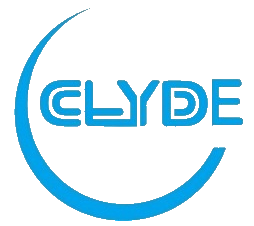The workflow and maintenance knowledge of the reaction kettle
In the chemical production process, the reactor not only undergoes simple chemical reaction processes, but also physical mass transfer processes such as fluid flow, material heat transfer, mass transfer, and mixing. In the reactor, the excitation measures for chemical reactions. For example, for gas and liquid reactions, the reaction rate is related to temperature and concentration, but also to the size of the phase interface and diffusion rate. For gas-solid reactions, regardless of the conditions, the gas-phase components first diffuse to the surface of the solid catalyst, and then undergo chemical reactions.
Due to the wide variety of raw materials used in chemical reactions, the reaction process is also very complex, and the requirements for the reaction products are also different. In order to meet different reaction requirements, the structural types and sizes of reaction vessels are also diverse, and the operating modes and conditions are also different. For example, in an intermittent operation reactor, the raw materials are added at once; Continuous operation of the reactor, where raw materials are continuously added. Reactors with different structural forms and sizes, as well as different operating conditions and methods, will affect the flow state of fluids and the heat, mass transfer, and mixing of materials. The transmission process is a necessary condition for implementing the reaction process.
The main purpose of a stainless steel reactor is to provide a reaction site and maintain certain conditions. It is a qualified reaction product carried out in the predetermined direction during the chemical reaction process. Almost all process equipment includes reactors. Therefore, it is of great significance to choose the appropriate reactor series, establish operating conditions, design reasonable and reliable reactors, and meet the growing needs of industry.
The reaction kettle should be designed reasonably and have good performance, and it needs to meet the following requirements:
- It should meet the requirements of chemical kinetics and transfer processes, with fast reaction speed, good selectivity, high conversion rate, more target products, and fewer by-products;
- Able to input or output heat in a timely and effective manner, maintain the thermal balance of the system, and enable the reaction process to proceed at an appropriate temperature;
- It should have suitable mechanical strength and corrosion resistance, meet the pressure requirements during the reaction process, and ensure that the equipment is resistant, safe, and reliable;
- Convenient manufacturing, easy installation and maintenance, flexible operation and adjustment, and long production cycle.
The maintenance of stainless steel electric heating reaction kettle should pay attention to the following points.
(1) Strictly follow the operating pressure and temperature specified on the product nameplate to avoid danger.
(2) Strictly follow the instructions on cooling and oil injection in the product manual, and do a good job in equipment maintenance.
(3) When using all valves, the valve stem (needle) should be slowly rotated to tighten the valve cover and achieve a sealing effect. Be careful not to use too much force when closing to avoid damaging the sealing surface.
(4) Electrical control instruments should be operated by dedicated personnel and overload protection facilities should be installed according to regulations.

